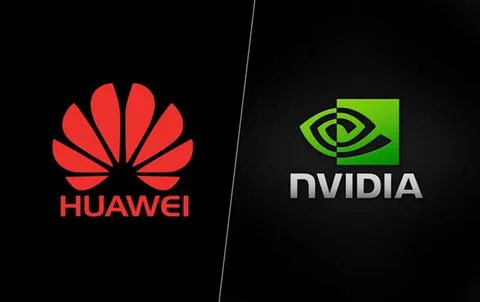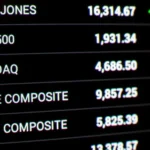Huawei, China’s tech conglomerate, is about to take the world by storm with the launch of its most capable processor to date-the Ascend 910D. The direct intention is to shake off the Nvidia monopoly in the AI chip development and semiconductor innovation area for too long. With the tightening of U.S. export bans compelling China to accelerate its self-reliance, AI model training has become a national interest for Huawei. The launch of the Ascend 910D, therefore, marks a vital advancement in China’s aspirations-tenacious changes will be made in the global scenario of AI chip development, semiconductor innovation, and-especially-in AI model training, where stakes are diverted round to.
Also Read: China’s Q1 Industrial Profits Surge Despite Tariff Pressures
Huawei’s Ascend 910D: A New Challenger in AI Chip Development
The Wall Street Journal reports that Huawei is gearing up to commence the testing of the Ascend 910D, another heavyweight in its Ascend AI GPU series. Initial runs of the technology tests will be conducted with major Chinese companies, with first samples expected by late May. The plan? To compete directly with the Nvidia H100, the gold standard of AI chip development and AI model training since 2022.
U.S. export controls currently blocking Nvidia from selling its H100 and the newer H200 into China have created a vacuum for Huawei and the domestic need to develop semiconductor innovations in the sector. This initiative, therefore, is regarded as being both courageous and effective, considering the circumstances.
The Ascend 910D is expected to bring China up on par in AI chip development, moving forward critical technologies for homegrown firms and AI model training sectors like facial recognition and natural language processing.
Ascent 910D local substitutes are in high demand. Their predecessors, the 910B and 910C by Huawei, paved the way for this new launch, and projections indicate that the shipment towards 2025 will be 800,000 units. While companies such as ByteDance-ready to incorporate these chips into shaping their vast AI model training plans.
Strategic Importance of Semiconductor Innovation for China’s Future
This race is not all about performance; it has turned out to be geopolitical and economic battles too. It’s not merely Huawei achievement: rather an achievement in its larger national goals that seeks independence in technology through advanced semiconductor innovation success.
There have been amazing breakthroughs, but progress is still beset by difficulties. Huawei and other chip makers within China are not allowed access to the top foundries in the world such as TSMC. China has also denied them access to high bandwidth memory that acts as a lynchpin in AI model training.
According to the new advances in chip packaging techniques that are very innovative, through the combined efforts of Huawei with several other chips, the semiconductor innovation is set to redefine the limits of what semiconductors can do without putting so much weight on the principle of getting tinier.
AI-chip development strategies assume survival tools in most of the pressures. Each edge gained by Huawei speaks of the renewed hope by China to be at the frontier of AI model training in the future as it builds flexible supply chains based on domestic semiconductor innovation.
Also Read: Stock Markets: How Investors Are Bracing for Trade Deal Twists Amid Tariff Turmoil
Impact on Nvidia and the Global AI Model Training Market
The markets reacted immediately to the announcement of the Ascend 910D. The slump of Nvidia stocks by 4% indicates that investors were anxious about possible disruption in the global AI chip development arena. The estimates are that Nvidia may lose about $5.5 billion in Q1 2025 on account of restrictions, which may further escalate to $16 billion over the year—indeed a big blow for a semiconductor innovator giant.
Industry experts, however, hold that, for now, Nvidia’s standing in the world outside China is still solid. While Huawei is setting up benchmarks for AI chip development within China, it will be only when Huawei chips penetrate the wider international markets that Nvidia will face real challenges.
Intriguingly, the Ascend 910D could enter the stage as a chip of choice for Chinese technology giants that require powerful processors for AI model training. While Huawei is expanding huge efforts into semiconductor innovation, other Chinese corporations are accelerating their own AI chip development initiatives to lessen their reliance on U.S. suppliers.
China’s Self-Reliance Mission in AI Chip Development and Semiconductor Innovation
The advanced stage that Huawei has reached coincides with an aggressive program for tech self-reliance that Beijing is trying to put in place. Following the unexpected success of Huawei’s Mate 60 smartphone in 2023, with an indigenous chip, China has put AI chip development and semiconductor industry innovations on the fast track.
If the Ascend 910D proves successful, it might signify the turning of a tide; if it delivers, Huawei will not just monopolize AI model training on the Chinese mainland but also emerge as a competitor to the established corporate world of AI chip development and semiconductor innovation. Experts suggest that, in due time, many nation-states will reconsider whatever reliance they may have on U.S. technologies for AI model training in their own backyards.
The tech world, around the world, has held its breath waiting for first samples to be shipped by Huawei by late May. Will Huawei sustain its momentum in semiconductors innovation, deliver on its promises, and claim a place in the global AI chip development war? Answers are yet to come.
But one thing is sure: the Ascend 910D is more than a chip for Huawei. It is an outwardly visible sign of a broader and virtually unstoppable competition for supremacy in AI chip development, semiconductor innovation, and the future of AI model training worldwide.
For More Trending Business News, Follow Us 10xtimes News






